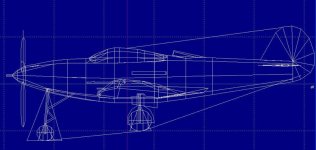Hello Aleatorylamp,
It sounds like you have no shortage of computers.
How fast is the AMD K6 on this machine?
Last night I finished putting my computer together (details elsewhere) and did some basic animation with the MDL I had rebuilt earlier with the computer in pieces in my living room.
I had not actually played much with the EJ P-39D, but it appears it could use some work in a few places.
I will probably add a new Texture file and add a few Parts to address issues with the Flaps.
I don't think the Airacobra had Slotted Flaps!
- Ivan.
It sounds like you have no shortage of computers.
How fast is the AMD K6 on this machine?
Last night I finished putting my computer together (details elsewhere) and did some basic animation with the MDL I had rebuilt earlier with the computer in pieces in my living room.
I had not actually played much with the EJ P-39D, but it appears it could use some work in a few places.
I will probably add a new Texture file and add a few Parts to address issues with the Flaps.
I don't think the Airacobra had Slotted Flaps!
- Ivan.







